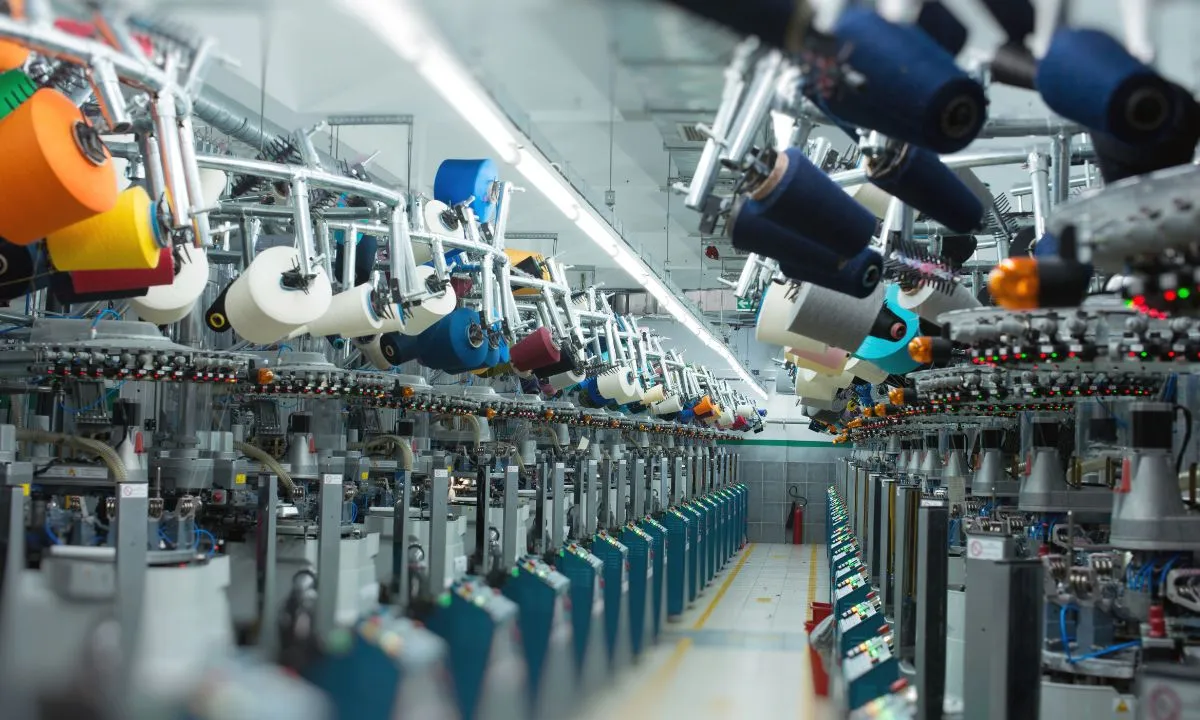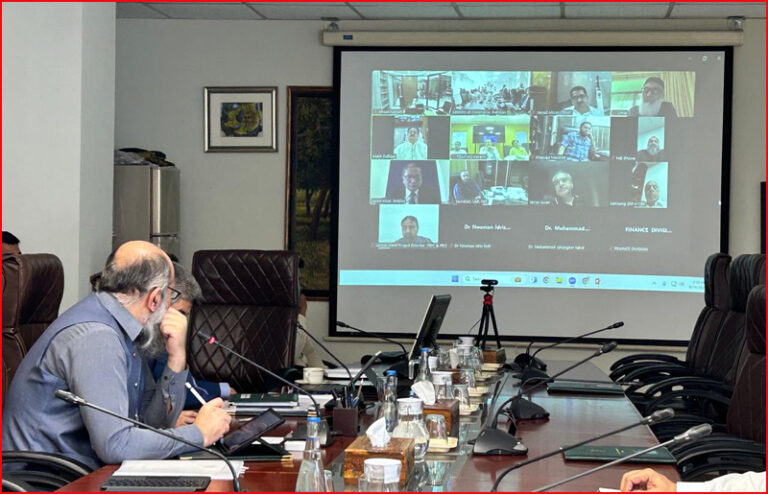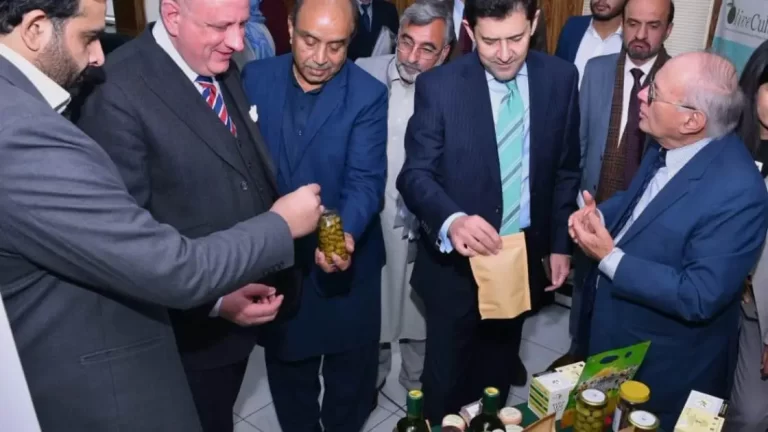Textile Sector Hit by Soaring Energy Costs
By Newztodays Team
The export sector was provided with regionally competitive energy tariffs (RCET) of 9 cents/kWh in 2021-22, and textiles and apparel exports witnessed record growth of 54%, from $12.5 billion in FY20 to $19.3 billion in FY22.
As RCET was withdrawn amid a larger macroeconomic crisis and power tariffs were rebased following the IMF 2023 SBA, power tariffs for export-oriented firms increased to over 14 cents/kWh and the industry could not sustain this momentum, causing textiles and apparel exports to plummet to $16.5 billion in FY23.
As it stands, power tariffs for industrial consumers have increased from 14 cents/kWh to approx. 17.5 cents/kWh (Rs. 46/kWh) due to quarterly tariff adjustments (QTA) prompted by falling power consumption, FPA of Rs. 7.056/kWh for Jan 2024, and higher QTAs are expected for upcoming quarters as power consumption continues to decline. Gohar Advocates for 9 Center Electricity Rate for Industries
Production is not financially feasible at these power tariffs given that they are over twice the average faced by competing firms in regional economies like Bangladesh (8.6 cents/kWh), India (10.3 cents/kWh on average; 6 cents/kWh for textile and apparel firms in Maharashtra), and Vietnam (7.2 cents/kWh).
Furthermore, gas prices for industrial consumers have also been hiked to Rs. 2,750/MMBtu—an increase of 223% since January 2023—eliminating the financial viability of captive generation that a significant part of the industry relied on in the absence of competitively priced grid electricity.
Accordingly, textiles and apparel exports are stagnating around $1.4 billion per month—$600 million below installed capacity of $2 billion/month. Investment of around $5 billion in upgrading/expanding manufacturing capacity that was made during the RCET period has become idle, negatively impacting investor returns, sentiment, and confidence in the economy.
Following the gas price increase, exports are highly likely to fall even further as there is no financially viable source of energy available to the industry to continue manufacturing with and be able to compete in international markets.
High energy tariffs have caused domestic production of yarn and cloth to become more expensive than imports.
Since firms can import duty-free inputs for exports, this will cause local yarn and cloth manufacturing to shut down, reduce employment, increase imports, reduce the domestic share of value added in exports, and deteriorate the trade balance.
The threshold value of power tariffs above which there is a complete loss of competitiveness in the textiles and apparel exports is approximated at 12.5 cents/kWh. Accordingly, the current tariff of 17.5 cents/kWh has and will induce large production cuts in the textile sector.
Moreover, at 9 cents/kWh energy costs account for 12-18% of total input costs across the textiles and apparel value chain.
Lower bound estimates based on data from publicly listed firms suggest that increasing power tariffs to 14 cents/kWh decreases firm profitability from 8.61% to 1.00%, on average, while power tariffs of 17.5 cents/kWh result in financial losses.
Given that the textile sector accounts for over half of Pakistan’s total export earnings and approximately 40% of the industrial labor force, this has significant implications for the overall economy, employment, and poverty.
If energy prices remain regionally uncompetitive, any recovery to pre-crisis levels of exports can be ruled out and the textile and apparel sector will imminently collapse.
As such, the economy will continue to face balance of payments and exchange rate pressures, especially given that gross external financing requirements over the next 5 years are projected at over $25 billion annually.
Power consumption of APTMA (North) members has been declining since at least October 2023 and was down by approximately 70% YoY in Dec 2023 and Jan 2024.
Gas consumption of APTMA (North) members has similarly declined from 170 MMcf/d a few months ago to only 80 MMcf/d at present.
Overall power consumption is also falling, driven by a decline in industrial and high-end domestic consumption that is the main contributor to power sector fixed costs.
This will necessitate high Quarterly Tariff Adjustments (QTA) in upcoming quarters, thereby further increasing already-high tariffs, following which power consumption is likely to fall further, necessitating further hikes in power tariffs for all consumers.
Prohibitively high and regionally uncompetitive power tariffs have caused the economy to become stuck in a vicious cycle of ever-increasing power tariffs and continuously declining power consumption.
The only way out of this cycle is to rationalize energy costs for industrial consumers which will stimulate industrial activity and thereby increase industrial power consumption.
The industry’s competitiveness is further threatened by the EU’s Carbon Border Adjustment Mechanism which will become operational by 2026. Under this mechanism, exports to the EU will face an effective tax based on their carbon content.
To maintain export competitiveness under C-BAM and similar green regulations in other key Western markets, the industry must transition to green energy by 2026.
To address the issues of prohibitively high power tariffs and the threat to export competitiveness posed by C-BAM, APTMA is advocating for the following solutions:
Power tariffs for industrial consumers must be brought down to 9 cents/kWh by removing the cross-subsidy to nonproductive sectors of the economy which is essentially an inefficient form of taxation that cannot be exported.
The Competitive Trading Bilateral Contracts Market (CTBCM) must be operationalized to allow B2B power contracts with a Use of System Charge (UoSC)/Wheeling Charge of 1-1.5 cents/kWh.
This will enable export-oriented firms to source green electricity at competitive end-user prices, either through captive generation from geothermal plants in depleted oil fields and hybrid solar/wind plants or from other green power producers.
The cap on solar net metering for industrial consumers must be increased from 1 MW up to 5 MW. This will further facilitate the transition towards net zero by adding over 3000 MW of clean energy at the point of usage, with no investment or guarantees from the government.
Ensure adequate gas supply to cogeneration units and treat them as industrial consumers given that their efficiency is over 60% and gas supply is used for steam and hot water-related processes in addition to power generation.








